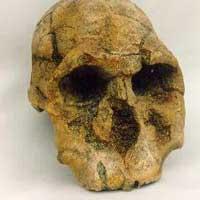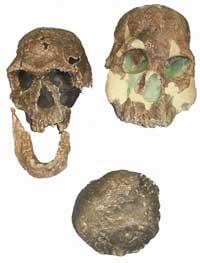Few bones on the road of man

In addition, the very way to investigate arouses great interest: it is surprising the amount of data that comes from four bone fragments. The research seems appropriate for Sherlock Holmes. The truth is that in research they use more of what documentaries and disclosure books teach us. However, from the outside it is not difficult to have doubts, the result is so surprising…
Are paleontologists so sure?
The case of Homo habilis has been very significant. In the early 1960s, the first remains of this species are found in Africa. By the size of the brain of this human being, and by other characteristics, they placed the species within the genus Homo, which looked much like us.
Twenty years later, anthropologists proposed to divide the species Homo habilis into two, because other fossils that had just been found on Lake Turkana in Kenya were of the same time but different. The differences were excessive to be habilis, so the new species Homo rudolfensis was described.
But now history can go back. In 1995, other fossils were discovered in the foz of Olduvai, in Tanzania, with characteristics of Homo habilis and Homo rudolfensis. These bones, therefore, can make bridge or, rather than bridge, raise the hypothesis that the two are one.
What is happening?

Anthropologists work with very few bones. Therefore, the consequences derived from this shortage must be taken with great care. At any moment can appear a fossil that puts up a complete hypothesis, anyone knows.
In addition, it is difficult to say if the discoveries are representative of their species. How can we know that the owner of this bone was not deformed by a disease? Or was it not especially small or big? We are not all the perfect model of our species.
And that is the main limitation of paleoanthropology. In the sight of a few bones one cannot appreciate what is the pattern of normality.
Knowing this, let us continue to dream of our ancestors, since knowing the limits of research does not take away mystery or charm.
Opinion article for Herri Irratia.
Buletina
Bidali zure helbide elektronikoa eta jaso asteroko buletina zure sarrera-ontzian











